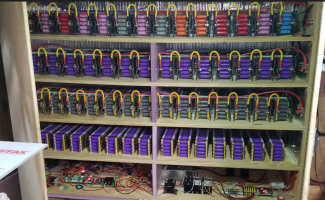CrankyCoder
Member
- Joined
- Mar 11, 2017
- Messages
- 95
Before there's too many comments. Yes, I have read some other posts on here. I have watched the testing videos. I saw that the fuse wire is rated at 5amp and typically fast blows at 8amp. I have seen the vids of the fuse looking like a light bulb. BUT. I have also seen the videos of much lower amp rated fuses lighting up as well. It seems that any fuses can light up like that. I read that even on the tesla packs that the individual fuse wires pop at 25amp. (that was surprising)
So with all that said. With the 5amp rated, 8amp pop rating. What is the general consensus on the batteryhookup nickel fuse? I saw on YT there is someone that keeps bringing up the idea of a battery going bad but not blowing the fuse and having a 5-6amp consistent current in/out. Not sure how often that happens. In the past i hae used 4amp fuse wire that would I would guess would pope around 6-7amp. It could hold 4-5amp which isn't good for the cell, but not blow the fuse.
My understanding is that the scenario where you would have that much draw/input for that one cell would mean coming into the whole pack like that. Meaning my 80cell pack would need something around 400amps pushing into that pack or pulling from that pack. In which my pack level fuse would block that.
So the question, is the cell level using really designed for deadshorted cells in a pack? if that's the case, would that 5amp (8 reality) be functional for deadshort?
Would that make the nickel strip fuse stuff from batteryhookup sufficient for pack building (especially if you have a large enough pack that a deadshort cell would get SERIOUSLY loaded)
I am restarting my project now that my out of state move is done.
Thanks!!!
So with all that said. With the 5amp rated, 8amp pop rating. What is the general consensus on the batteryhookup nickel fuse? I saw on YT there is someone that keeps bringing up the idea of a battery going bad but not blowing the fuse and having a 5-6amp consistent current in/out. Not sure how often that happens. In the past i hae used 4amp fuse wire that would I would guess would pope around 6-7amp. It could hold 4-5amp which isn't good for the cell, but not blow the fuse.
My understanding is that the scenario where you would have that much draw/input for that one cell would mean coming into the whole pack like that. Meaning my 80cell pack would need something around 400amps pushing into that pack or pulling from that pack. In which my pack level fuse would block that.
So the question, is the cell level using really designed for deadshorted cells in a pack? if that's the case, would that 5amp (8 reality) be functional for deadshort?
Would that make the nickel strip fuse stuff from batteryhookup sufficient for pack building (especially if you have a large enough pack that a deadshort cell would get SERIOUSLY loaded)
I am restarting my project now that my out of state move is done.
Thanks!!!






